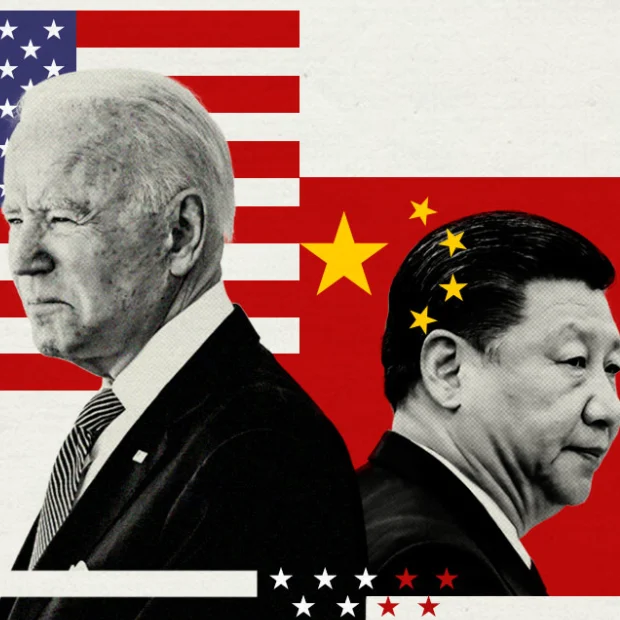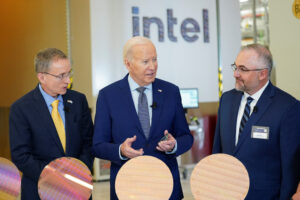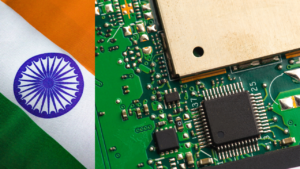Introduction
In the realm of semiconductor technology, China has been making significant strides, and US is finding it increasingly challenging to curb the progress of Chinese firms like Semiconductor Manufacturing International Corp (SMIC) and Huawei Technologies even via Bans.
Burn J. Lin, a respected figure in the semiconductor industry, believes that the US cannot entirely halt China’s advancement in chip technology.
In this article, we will explore how China is making waves in semiconductor technology, why containment efforts are faltering, and what the future may hold.
1. Impressive Achievements of China Despite US bans
China’s semiconductor industry has surprised the world with its remarkable accomplishments. Huawei, in particular, sent shockwaves through the industry when it unveiled a 7-nanometer processor manufactured by SMIC in its Mate 60 Pro smartphone. This achievement marked a turning point for China, leading to both celebrations in China and concerns in the US about the effectiveness of efforts to contain China’s tech ascent.
Furthermore, China’s advancements in memory chips have become an additional area of concern for Washington. While memory chips may be considered a more standardized form of silicon compared to processors, they remain crucial components in various applications, such as smartphones, AI training servers, and military drones.
Notably, a Canadian research firm, TechInsights, recently uncovered an advanced chip produced by Yangtze Memory in a solid-state drive that was introduced in July. This discovery is significant because it occurred several months after the US imposed restrictions that led foreign equipment suppliers to sever their ties with the Chinese semiconductor company.
TechInsights, known for its role in revealing details about SMIC and Huawei’s 7-nanometer chip through a collaborative investigation with Bloomberg News, identified a 232-layer quad-level cell 3D NAND die during a routine device teardown. This chip was hailed as one of the most advanced memory chips the firm had ever encountered.
Read More: China Makes World’s Most Advanced 3D NAND memory chip Despite US Sanctions
2. Ban Challenge for the US against China
Despite the US tightening existing restrictions on the export of advanced technology to China, its containment efforts may not be sufficient.
Burn J. Lin, former Vice President of Taiwan Semiconductor Manufacturing Co (TSMC), argues that trying to limit China’s progress is futile.
He suggests that the US should instead focus on maintaining its leadership in chip design. Lin’s perspective echoes that of industry leaders like Rene Haas, the CEO of Arm Holdings.
One unintended consequence of the US restrictions is that they may have provided an opportunity for SMIC to flourish.
When the US effectively banned TSMC, a key supplier of advanced silicon, from doing business with Huawei in 2020, SMIC stepped in to take on the massive orders. This move allowed SMIC to enhance its manufacturing techniques and compete on a global scale.
“It is just not possible for the US to completely prevent China from improving its chip technology. What the US really should do is to focus on maintaining its chip design leadership instead of trying to limit China’s progress, which is futile as China is adopting a whole nation strategy to boost its chip industry, and hurting the global economy”
~Burn J. Lin, a former TSMC vice-president.
Read More: 5 Major Implications of China’s Growing Semiconductor Dominance
3. The Future of China Semiconductor Industry Despite US bans
China is poised to continue its technological ascent. Apart from striving to reach the 5-nanometer milestone, China is likely to experiment with new materials and advanced chip packaging techniques to produce more powerful semiconductors. The nation’s whole-nation strategy to bolster its chip industry is a significant force behind its progress.
While the debate about whether the US and its allies should intensify their containment campaign against China rages on, there is growing evidence that China is successfully overcoming trade restrictions and building its own domestic semiconductor supply chain.
Industry analysts estimate that Huawei could manufacture up to 70 million smartphones with its Kirin chips in 2024, a substantially less number compared to Apple’s annual iPhone shipments.
Read More: How China Circumvented US Restrictions to Unveil 120 Layer NAND Flash
Conclusion
As China’s semiconductor industry continues to advance rapidly, the US faces the challenge of containing this progress. The efforts to restrict exports of advanced technology to China have not proven entirely effective, and China’s comprehensive strategy for chip development remains a formidable force. To stay competitive, the US should consider focusing on chip design leadership rather than trying to limit China’s technological growth. The semiconductor landscape is evolving, and it is essential for industry leaders and policymakers to adapt to the changing dynamics of this critical sector.








